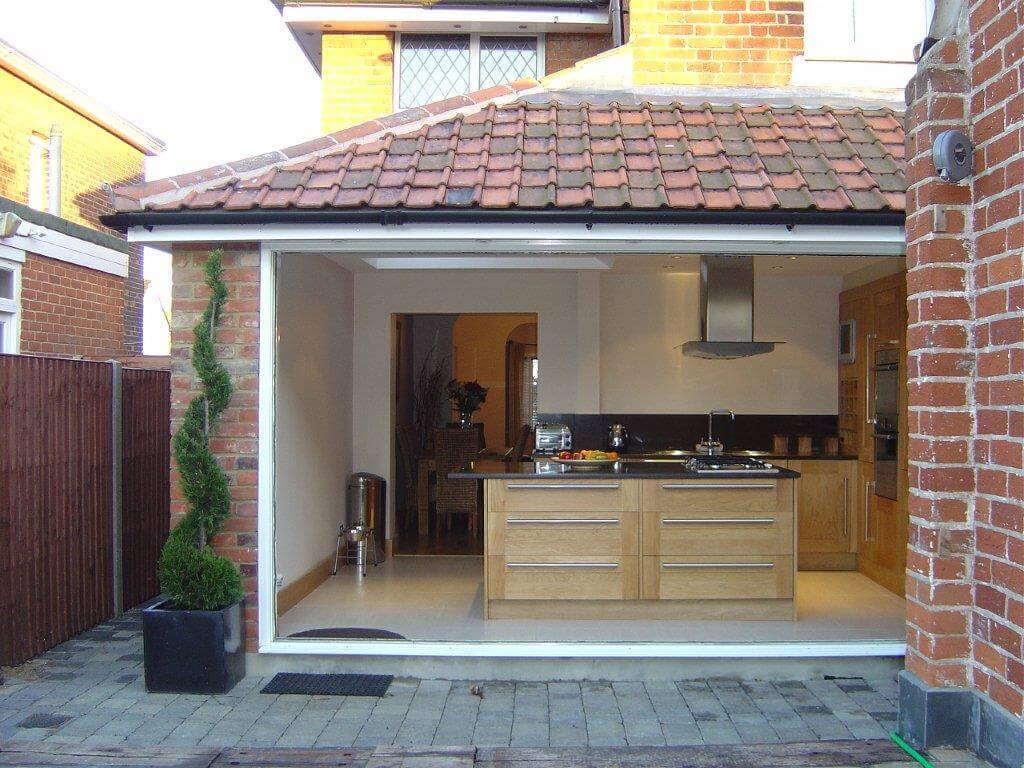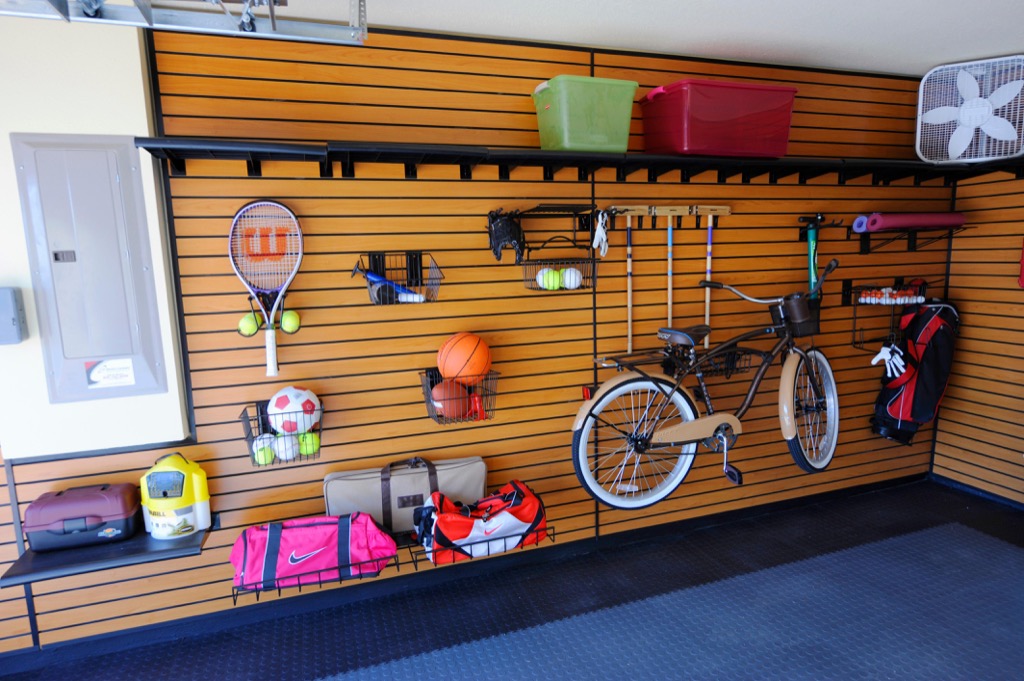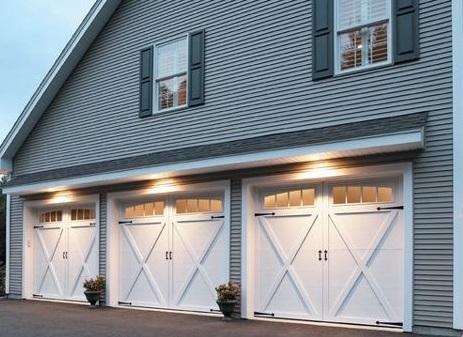
A garage converted to a home theatre can be a fun project that will allow you to enjoy the best movie-watching experience. It will also make your home a comfortable place for you and your loved ones. These are the things to consider before you decide to convert your garage into a home theatre.
Choosing the Right Equipment for Your Garage Theatre
It is essential to ensure that your theater space is soundproofed and well-insulated. Using a high-quality ceiling and paint will help to block out noise, as will adding acoustic panels or other soundproofing materials.
It can make a huge difference in your enjoyment of your new theater space by having the right equipment. You'll need a projector, for example, to make your new media area more enjoyable for watching movies. You can see the movie in a bigger, more cinematic manner with a projector.
Also, great cinema experiences are possible only if you have a quality sound system. A sound system should be installed in your theater. The contractor must know how to use it efficiently and correctly.

The location of speakers is one of the most critical aspects of a sound system. It is best to place the speakers in a central location in your media room. This will give you better sound quality than if they are scattered around the room.
You will need a projector, screen and speaker system to make your theater a true cinema. These items will greatly enhance your garage-to-home theater conversion and be well worth the money you spend on them.
It is important to find a trustworthy installer who can assist you with all details. They can help you choose the right screen, projector, and speakers for your theater.
It can be costly to purchase the right equipment. Therefore, it is wise to do your research before you buy. You will avoid making a bad decision and your space will be perfect for you.
Consider Your Options
There are many ways you can turn your garage into entertainment space. It all depends on the size of your house. There are so many creative and fun ideas to make your garage an entertainment area.

You might consider turning your garage into a media space if you are looking for something less expensive. Whether you want to watch movies, play video games or host parties, this option can be a great addition to your home and is a cost-effective alternative to having a whole new room built.
Valerie Loor was looking for a solution that would provide them with both media and gathering space in the garage. They wanted a place they could watch movies in, but also space to host friends and family.
FAQ
Which order should you renovate the house?
First, the roof. The second, the plumbing. Third, the electrical wiring. Fourth, the walls. Fifth, floors. Sixth, are the windows. Seventh, the doors. Eighth, is the kitchen. Ninth, the bathrooms. Tenth, garage.
After all the above, you are now ready for the attic.
You might consider hiring someone who is skilled in renovating your house. You will need patience, time, and effort when renovating your own home. You will also need to spend money. Don't be discouraged if you don’t feel up to the task.
Renovations aren't cheap, but they can save you tons of money in the long run. A beautiful home can make your life easier.
Is $30000 enough to remodel a kitchen?
You can expect to pay anywhere from $15000-$35000 for a kitchen overhaul, depending on how much money you have available. Expect to spend over $20,000. For a complete kitchen renovation. A complete kitchen remodel will cost more than $20,000. However, updating appliances, replacing countertops, or adding lighting can be done for under $3000.
The average price for a full-scale renovation is usually between $12,000-$25,000. There are many ways to save money and not compromise on quality. A new sink can be installed instead of replacing an older one. This will cost you approximately $1000. You can also buy used appliances at half the cost of new ones.
Kitchen renovations are more time-consuming than other types of projects. Plan accordingly. It doesn't make sense to start work on your kitchen when you realize half way through that time is running out.
Your best bet is to get started early. Begin by looking at all options and getting estimates from multiple contractors. Then, narrow down your options based upon price, quality, availability.
Once you have identified potential contractors, request estimates and compare their prices. The lowest-priced bid isn't always the best choice. It's important that you find someone with similar work experiences who can provide a detailed estimate.
Be sure to take into account all additional costs when you calculate the final cost. These may include labor or material charges, permits and so forth. Be realistic about what you can afford and stick to your budget.
If you're unhappy with any of the bids, be honest. Tell the contractor why you don't like the initial quote and offer another chance. Don't let pride stand in the way of saving money.
What would it cost for a home to be gutted versus what it would cost to build one?
Gutting a home removes everything inside a building, including walls, floors, ceilings, plumbing, electrical wiring, appliances, fixtures, etc. It is often done when you are moving to a new location and wish to make some improvements before you move in. Due to so many factors involved in the process of gutting a property, it can be very costly. Depending on the job, the average cost of gutting a home is between $10,000 and $20,000
A builder builds a house by building it frame by frame. Then, he adds walls and flooring, roofing, windows and doors. This is typically done after purchasing lots and lots of lands. Building a home usually costs less than gutting and can cost between $15,000 and $30,000.
It all depends on what you plan to do with your space. You'll likely need to spend more money if you want to gut a property. You don't need to take everything apart or redo everything if you are building a home. You can build it the way you want it instead of waiting for someone else to come in and tear everything up.
What is the difference between a remodel and a renovation?
A remodel is major renovation to a room, or a portion of a rooms. A renovation refers to minor changes made to a particular room or area of a given room. A bathroom remodel can be a large project while an addition to a sink faucet can be a small project.
A remodel involves replacing an entire room or part of a whole room. A renovation involves only changing a portion of a room. For example, a kitchen remodel involves replacing counters, sinks, appliances, lighting, paint colors, and other accessories. You could also update your kitchen by painting the walls, or installing new light fixtures.
How long does it usually take to remodel your bathroom?
Remodeling a bathroom typically takes two weeks to finish. However, this varies greatly depending on the size of the project. For smaller jobs such as installing a vanity or adding an stall to the bathroom, it can usually be done in just a few hours. Larger projects like removing walls and installing tile floors or plumbing fixtures can take many days.
As a general rule, you should allow at least three days for each bedroom. You would need 12 days to complete four bathrooms.
What is the cost of remodeling a kitchen or bathroom?
Remodeling a kitchen or bathroom is a costly undertaking. But considering how much money you spend on energy bills each month, it might make more sense to invest in upgrading your home.
Small upgrades can help you save thousands of dollars per year. A few easy changes like adding insulation to ceilings or walls can reduce heating/cooling costs by as much as 30%. Even a simple addition can increase comfort and reduce resale costs.
It is essential to remember that renovations should be done with durable, easy-to-maintain materials. Solid wood flooring, porcelain tile, and stainless steel appliances last longer than vinyl and laminate countertops and require less maintenance.
You might find that upgrading to newer fixtures can cut down on utility costs. Low-flow faucets and showerheads can reduce water consumption by as much as 50%. Replacing inefficient lighting with compact fluorescent bulbs can cut electricity consumption by up to 75 percent.
Statistics
External Links
How To
How to Remove Tile Grout from Floor Tiles
Tile grouting is something that most people don't even know they have. It is used to seal joints between tiles. There are many kinds of grout on the market today. Each type serves a specific purpose. We'll show you how we can remove grout from floor tiles.
-
Before you begin, make sure you have everything you need. It is best to have a grout cutter, grout scraper, and some towels.
-
You will now need to clean off any dirt and debris that may have been under the tile. Use the grout cutter to cut away at the grout and gently scrape away any loose pieces. You should not damage any tiles.
-
After everything is cleaned up, use the grout scraper for any remaining grout. If there isn't any grout left, you can go to step 4.
-
Now you can get on with the next step. Take one of the rags and soak it in water. Make sure the rag has completely soaked in water. You can wring the rag out if it has become wet. This will ensure that any water remains in the rag.
-
Place the wet cloth on the joint where the tile meets with the wall. Press firmly on the rag until the grout begins to break apart. Slowly pull the rag toward you, and keep pulling back and forth until all of the grout is gone.
-
Continue repeating steps 4 through 5 until all grout is removed. Rinse the ragout. Repeat the process if necessary.
-
Once you have finished removing all the grout, wipe down the surface of the tiles with a damp cloth. Let dry thoroughly.